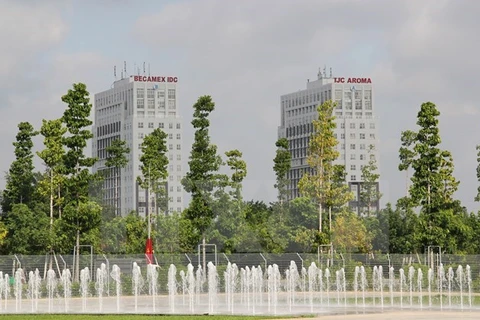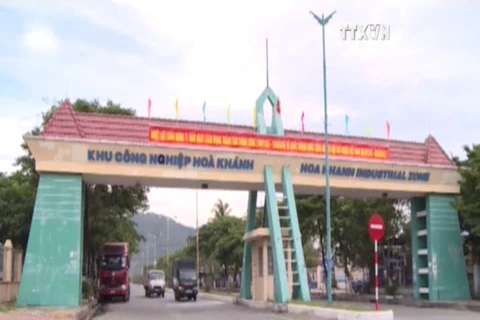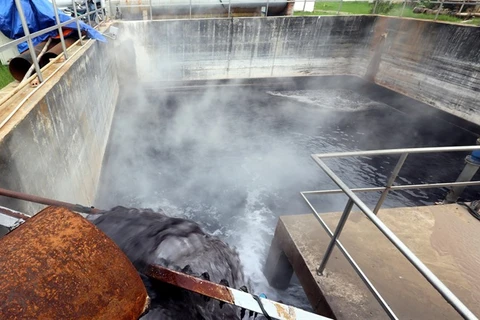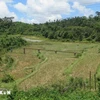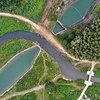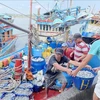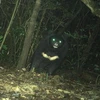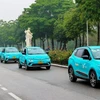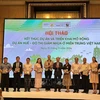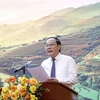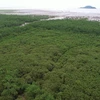 Pham Van Moi, head of the Hai Phong Economic Zone Authority, speaks at the symposium on September 19 (Photo: VNA)
Pham Van Moi, head of the Hai Phong Economic Zone Authority, speaks at the symposium on September 19 (Photo: VNA) Hai Phong (VNA) – A symposium held in northern Hai Phong city on September 19 looked into the global trend of eco-industrial parks (EIPs) and their prospects in Vietnam.
According to the Institute of Strategy and Policy on Natural Resources and Environment (ISPONRE), EIPs have been opened in many countries which do not see industrial parks as separate entities but inter-connected systems. In these parks, waste in industrial production is gradually eliminated towards zero emissions.
The industrial waste management through the EIP model is considered an effective approach that generates economic and environmental benefits and is feasible in Vietnam. However, this necessitates synchronous policies from planning to infrastructure development and financial support to expand EIPs, the ISPONRE said.
This model features industrial symbiosis, which means businesses cooperate with others in the same industrial park or other parks to optimise input and output factors like materials, waste, energy, waste and scrap during their production and business process. Through this cooperation, they form a network for exchanging production serving factors, sharing infrastructure and services and improving operations.
In Vietnam, a study has been conducted to consider applying the EIP model in Bien Hoa 1 and 2 industrial parks in southern Dong Nai province. The Ministry of Planning and Investment and the UN Industrial Development Organisation have also carried out an EIP initiative towards a sustainable industrial park model, the institute said.
Pham Van Moi, head of the Hai Phong Economic Zone Authority, said local industrial parks and economic zones have attracted projects from major businesses of the Republic of Korea, Japan, the US and Hong Kong (China). They have applied modern equipment and technologies that are environmentally friendly, save energy and manufacture products with high-added value.
He added industrial parks in the city have complied with regulations on environmental protection and waste treatment, ensuring industrial waste meets Vietnamese standards before being released into the environment.
To turn Hai Phong into a green civilized and modern city, it is working to build new EIPs and transform existing parks like the Dinh Vu, Nam Dinh Vu, or the one of the Hai Phong International Gateway Port into EIPs, the official noted. –VNA
VNA
